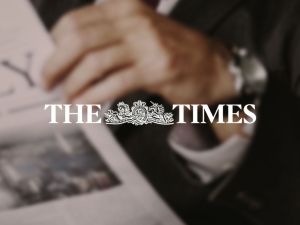As Nobel Prize-winning economist Harry Markowitz once said: “Diversification is the only free lunch in investing.”
Put simply, there are no magic tricks or shortcuts in finance – but there is one thing you can do to help yourself without incurring extra costs: don’t put all your eggs in one basket.
Diversifying means spreading risk by investing across a range of instruments and markets. That way, if one part underperforms, others can help offset the loss. It’s like carrying an umbrella big enough to cover you even in an unexpected downpour.
But choosing the right tools to diversify isn’t simple – it’s a technical process that unfolds over multiple stages. There are many questions to consider, even though it’s easy to assume the decision is binary: more equities or more bonds? Growth or protection?
Behind each of our portfolios lies a structured, multi-layered diversification process – driven by a dedicated team that analyses, evaluates, tests, and decides every single day.
Three stages, one direction
Our portfolio construction process unfolds in three core stages, all working in synergy.
Strategic Asset Allocation (SAA)
This is the foundation for building robust, optimised portfolios. Here, we define the ideal long-term investment allocation by estimating expected returns, risks, and correlations across major asset classes. Our time horizon is 10 years – a span that allows us to align portfolios with structural economic trends.
The SAA is reviewed annually to reflect new information and any changes from the previous year.
Tactical Asset Allocation (TAA)
No forecast, no matter how accurate, can fully capture the nuances of the present. That’s why we make periodic tactical adjustments to complement the strategic allocation. These are designed to reflect current economic conditions and the latest market signals.
This approach helps us capture short-term opportunities and manage emerging risks – always mindful that tactical choices may deviate from long-term expectations.
Instrument selection
Once the portfolio structure is defined, we choose the most suitable instruments to implement it. This phase involves assessing hundreds of ETFs using strict criteria including cost, liquidity, tracking quality, credit risk, and transparency.
The result is a selection that balances efficiency and resilience.
Risk management as a discipline
Risk management is built into our strategy. Every decision is stress-tested across a wide range of scenarios: market crashes, inflation spikes, geopolitical shocks.
Our goal is to build resilient portfolios that stay true to the client’s objectives – even in extreme conditions.
We monitor volatility, Value at Risk (VaR), asset correlations, currency exposure, and many other indicators on a daily basis. And when needed, we act – not to chase the market, but to maintain strategic consistency with the investor’s risk profile and time horizon.
A collective, supervised and robust process
Our Asset Allocation Team works closely with the Investment Committee, the decision-making hub of our process.
All changes to portfolios – strategic or tactical – undergo a structured review involving experts in macroeconomics, behavioural finance, quantitative analysis, and instrument selection.
Every proposal is examined from multiple angles, tested, and validated. This provides a second layer of oversight and helps minimise the risk of impulsive or overly subjective decisions.
The questions we ask ourselves
Should we hedge? More or less US dollar? What’s the optimal duration for the bond allocation? These are just some of the questions our team addresses during rebalancing.
For socially responsible and thematic portfolios, the process includes even more layers of analysis, with a focus on the underlying strategies.
Once the direction for rebalancing is clear, the team’s job is far from over. Next comes a crucial phase: determining the precise scale of the adjustments and deepening the market analysis to assess the evolving ETF landscape – this requires access to up-to-date data and the tools and skills to interpret it accurately.
We then analyse the impact of the proposed changes on the portfolio, considering factors like expected performance, potential drawdowns, and how the portfolio behaves in different market scenarios – with and without rebalancing.
And finally, we move to implementation: executing the actual trades on the markets, with all the complexities that come with trading the instruments involved.
Keeping costs at bay
A core principle of our strategy is keeping costs under control.
Investing is a long-term activity, and even a small difference in fees can have a significant impact on outcomes. That’s why we primarily build our portfolios with ETFs – transparent, liquid, low-cost instruments selected through a rigorous and impartial process.
In a world where expected returns are lower than in the past, keeping costs down is a competitive edge. If you’re interested, here’s a closer look at how we’re working to reduce costs.
Dynamic portfolios, always aligned
Every year – and more often when needed – we rebalance our portfolios to reflect changes in markets and economic outlooks. Rebalancing helps maintain the right level of risk and exposure, preventing natural market shifts from altering the portfolio’s profile.
We always do this thoughtfully, with a clear goal: to protect clients from unexpected risks and seize opportunities only when the potential benefit clearly outweighs the cost.
But a word of caution: rebalancing too frequently or too aggressively is not necessarily an advantage. It can lead to overactivity that adds little value – and brings operational and tax costs with it.
It’s important to remember that the real strength of the Moneyfarm service doesn’t lie only in the rebalancing itself, but in the initial design of well-diversified, robust portfolios built to match each investor’s risk profile and time horizon.
Rebalancing is just one part of the equation. The real value comes from the disciplined, research-driven asset allocation at the heart of our approach – designed to support in delivering long-term stability even in challenging markets.
Please remember that when investing, your capital is at risk and any expected returns are projections and not guarantees.
The value of your Moneyfarm portfolio may go down as well as up, and you may get back less than you invested.
The views expressed here should not be taken as recommendations, advice, or forecasts. If you’re unsure whether investing is right for you, please speak to a financial adviser.
*As with all investing, financial instruments involve inherent risks, including loss of capital, market fluctuations and liquidity risk. Past performance is no guarantee of future results. It is important to consider your risk tolerance and investment objectives before proceeding.





